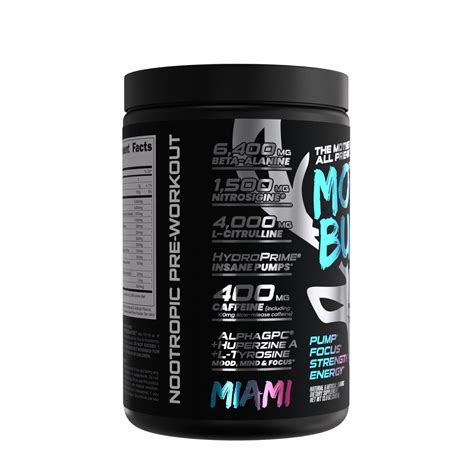Boost male performance: What specific training density optimizes lean muscle & strength?

For men aiming to maximize their physical potential, the pursuit of lean muscle and raw strength is a constant endeavor. While volume and intensity often grab the spotlight, training density – the amount of work performed within a given timeframe – is a critical, yet frequently underestimated, variable in the quest for superior performance. Optimizing this factor can be the game-changer, dictating not only how much muscle you build but also how efficiently you gain strength and recover.
What is Training Density and Why Does It Matter?
Training density refers to the total work (sets x reps x weight) you accomplish divided by the time it takes to complete that work, including rest periods. For example, lifting 100 kg for 5 sets of 5 reps in 30 minutes is denser than completing the same work in 45 minutes. A higher training density means more work is done in less time, leading to a greater metabolic stress and often, a more potent stimulus for muscle growth and adaptation.
For male performance, this translates into improved work capacity, enhanced cardiovascular fitness, and a more efficient pathway to both hypertrophy (muscle growth) and absolute strength. By manipulating rest times, exercise selection, and rep schemes, you can strategically increase density to push your body beyond its current limits.

Finding the Optimal Density for Lean Muscle Hypertrophy
When it comes to building lean muscle, the goal is to create sufficient mechanical tension, metabolic stress, and muscle damage. Training density plays a crucial role here. Traditionally, moderate to high volumes with moderate rest periods (60-120 seconds) are favored for hypertrophy. Increasing density within this framework means aiming to do the same volume in less time or more volume in the same time. This can be achieved by:
- Reducing rest periods: Gradually shortening rest between sets while maintaining weight and reps.
- Supersets/Circuit Training: Pairing non-competing exercises or multiple exercises back-to-back with minimal rest.
- Increasing load/reps: Performing more work in the same timeframe without excessively long rest.
The sweet spot often lies in finding a balance where density is high enough to stimulate growth but not so high that it compromises form, significantly reduces total volume, or leads to overtraining. For many, a rest period of 45-75 seconds between sets for compound movements, and 30-60 seconds for isolation work, strikes a good balance for hypertrophy-focused density.

Optimizing Density for Strength Gains
Strength training often prioritizes heavier loads and longer rest periods (2-5 minutes) to ensure full recovery of the ATP-PC system and allow for maximal effort on each set. However, density can still be manipulated to enhance strength. For strength, the focus shifts slightly from constant metabolic stress to optimizing the neural drive and the ability to recover between heavy lifts.
Strategies for strength-focused density:
- Cluster Sets: Breaking a set into smaller mini-sets with short intra-set rests (10-30 seconds). This allows for more reps with a heavier load than a traditional straight set.
- Wave Loading: Progressively increasing and then decreasing load over several sets, often with varied rest periods to manage fatigue.
- Reduced rest on lighter accessory work: While main lifts still require ample rest, reducing rest on supporting exercises can build work capacity and aid recovery between main sets over time.
The key is to increase work capacity for heavy loads without compromising technique or the quality of your maximal efforts. This often means carefully periodizing density, perhaps incorporating higher density phases with slightly lighter loads, then transitioning to lower density, higher intensity phases.

Individual Factors and Progressive Overload
What constitutes “optimal” density is highly individual. Factors such as training experience, recovery capacity, nutrition, sleep quality, and stress levels all play a significant role. Beginners might benefit from gradual increases in density, while advanced lifters may require more sophisticated density manipulation to break plateaus.
Regardless of your goal, the principle of progressive overload remains paramount. Once you can comfortably complete a certain amount of work in a given time, you must progress. This could mean:
- Doing the same reps/sets with heavier weight in the same time.
- Doing more reps/sets with the same weight in the same time.
- Doing the same reps/sets with the same weight in less time.
Tracking your workouts is crucial. Note down the exercises, sets, reps, weight, and total time taken. This objective data allows you to identify opportunities to increase density systematically and ensures you’re continually challenging your body.

Incorporating Density Training into Your Routine
Implementing density training doesn’t mean every workout needs to be a race against the clock. It can be periodized, meaning you might dedicate specific blocks or cycles to higher density work, or incorporate it into certain training days. For example:
- Hypertrophy block: Focus on slightly shorter rest periods (60-90 seconds) for most compound movements.
- Strength block: Maintain longer rest for primary lifts, but use supersets or shorter rests for accessory work to improve overall work capacity.
- Metabolic conditioning: Use higher density circuits or AMRAP (As Many Rounds As Possible) sessions to boost endurance and fat loss.
Listen to your body. Overtraining can be a significant risk if density is pushed too high without adequate recovery. Ensure your nutrition supports your increased energy expenditure, prioritize sleep, and incorporate deload weeks as needed to prevent burnout.

Conclusion
For men seeking to boost their physical performance, truly optimizing lean muscle and strength goes beyond simply lifting heavy or performing high volume. Training density is the often-missed piece of the puzzle that can unlock new levels of adaptation. By strategically manipulating the amount of work performed within a given timeframe, you can create a more potent stimulus for growth, improve work capacity, and accelerate your progress towards a more powerful and muscular physique. Experiment, track your results, and consistently challenge your body’s ability to do more in less time, and you’ll find the specific density that truly optimizes your performance.









